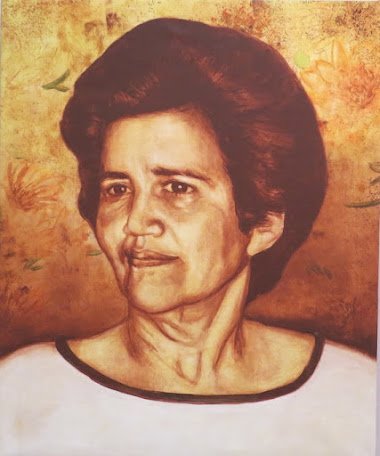.jpg) |
| Photography artwork by Arnaldo Drés González Documentation by Allan Ginsburg. |
From Dust and Air, my Grandmother and a Windmill.
By Arnaldo Drés González
Between popular songs about windmills, thinking about my home, communication from the distance and the migrant feeling, the concept of a physical postcard is multi diverse. The written postcard, with images, moving image or with a voice message, as what we have in contemporaneity, expand the possibilities of continuing to inhabit our memories and remembrances.
The mill element was often used for decades to describe literally or figuratively fictitious texts of folk wisdom and the history of a nation's development. In Spanish culture, for example, sayings, riddles and songs abound, which now survive in printed texts and some audio recordings with different fragments that can be found on the web. Many songs tell us about mills, miller, mill woman, millstones, wind, wheat, corn and stones. Songs that have been sung, covered and reinvented by generations of our ancestors over the years. Our grandparents surely know this very well. It is obvious how important mills were as an integral part of everyday life, and even past life, in a society where everyone went to get something simple like bread. Today, traces of a social, industrial and cultural evolution of the mills remain. Their imaginary being portrayed in postcards for tourist consumption. For some it will be only beautiful images of a place, for others, an image that tells us much more about what we see.
How much can a postcard of the old Buenavista mill in Sa Punta des Molí (1818) in Ibiza portray, narrate or evoke? Is its existence a myth in its own aura? Are the blades of the mill a myth of the temporality of global life? Something like when everything starts and returns to its starting point. Like the migration of my grandmother from the Canary Islands to Venezuela in the fifties due to the serious economic difficulties that Spain was going through since the late forties, and nowadays, the migratory turn of her descendants to their point of origin, like me, who have migrated from Venezuela to Europe while other migratory waves are happening to other parts of the world in the XXI century.
A curious case is that near the Molino de Sa Punta des Molí there is a house where the well-known German philosopher of Jewish origin Walter Benjamin (Berlin, 1892 - Port Bou, Spain, 1940) lived, who reflects in his writings about his life and his history through his collection of postcards, including those missing postcards with which he allowed himself to inhabit those landscapes that his traveling grandmother sent him from her travels around the world. Probably, the same thing happened to my grandmother in Venezuela when she saw photographs of me in the snow in Germany, which I shared with her from a distance by instant messaging from my cell phone. However, this ability to inhabit is also possible from the stories that people tell, sometimes sung in traditional songs and that, like a photography, a drawing or a painting, transmit images to our imagination. It is like a small window that expands like a ray of light when we open it with our heart and emotion.
"There is a secret agreement between past generations and the present one". "The true picture of the past flits by. The past can be seized only as an image which flashes up at the instant when it can be recognized and is never seen again".
Fragments of theses 2 and 5. Theses on the philosophy of history, 1940.
Walter Benjamin
"From Dust and Air, my Grandmother and a Windmill" is an artwork presented at the first edition of the contemporary art event ENTRÁNSITO, at Centro Cultural Sa Punta des Molí - San Antoni de Portmany (Ibiza), April 2023.
Click to listen to the Soundscape
Soundscape Description Translation from Spanish (Original) to English
The wind can be heard and maybe some waves from the sea as a group of women try to remember to sing a couplet about a mill:
In the mill no air passes and olé, no air passes and olé, no air passes and olé.
Someone in the group corrects them: Should this be repeated or not?
They sing again: Knead the dust and the sand
A new correction: is Flour!
They begin again:
Knead the dust and the flour that carries the air and olé, that carries the air and olé, that carries the air and olé, olé, that carries the air.
A singer appears:
Because the miller says he has no one to go with him, come with me to the mill and you will be my mill woman. You throw the wheat in the hopper, you throw the wheat in the hopper, while I pick the stone, come with me to the mill and you'll be my mill woman.
A voice message from my grandmother from Venezuela appears:
Hello! A lot of snow, my love, a lot of snow? Oh, be careful! You'll get cold, you know. Hey Arnaldo, how will that be, my love, there with the snow and then drinking a cup of hot coffee, right? Very good.
Look, it gave me a thrill. I don't know how many weeks it's been since I've not seen your brother, but he has to comply with his obligations. Well, my love, God bless you, a big, big hug! And a big kiss! Please give your sister a hug for me, I send it to her. Did you get it? O.K. God bless you.
Other women's voices join in singing:
Miller, miller, only my mill knows, how much I love you, Oh my miller! And in the happy moment where the blades of the mill are stirring, there was heard a lament of a divine kiss, of corn and wheat so divine. Miller, miller, only my mill knows, how much I love you, Oh my miller! Singing and dancing and thinking of my poor miller, I go through life without another partner, of corn and pleasant wheat. Miller, miller, only my miller knows, how much I love you, Oh my miller!
%20F%20rom%20Dust%20and%20Air,%20my%20Grandmothe%20r%20and%20a%20Windmill,%20Installation,%20%20Arnaldo%20Dres%20Gonzalez,%202023.jpg) |
| Installation Arnaldo Drés González, photographed by the artist. |
"From Dust and Air, my Grandmother and a Windmill" is part of the project "Resguardo y Presencia/ Shelter and Presence" that explores the appropriation of materials from the urban landscape to recreate the ambiguity of human relationships, social values, tensions and conflicts of everyday life. Based on the allegory of the green fabrics that cover the facades of disintegrating buildings and protect nearby passersby, Arnaldo Drés González turns these functional aesthetic appearances into poetic narratives that together with the intervention of the human body in video and photography generate metaphors of existence, fear, shelter, identity, transit and territory.
Arnaldo Drés González (b. 1986, Caracas - Venezuela). Since 2014 lives and works in Hamburg, Germany. Graduated from the fine arts department of UNEARTE in Caracas (2011) and holds a master's degree from the Hochschule für Künste im Sozialen (HKS) in Ottersberg, Germany (2016). In 2015 he won the honorable mention award at the 17th altonale Art Festival in Hamburg. 2019 was selected as a guest artist for the program "Stadtlabor" at the Performing Arts Festival Berlin. In 2021 he was nominated for the art prize of the Atelierkate Lesun in Bremen and invited to the solo exhibition for emerging artists at the Affordable Art Fair Hamburg. His work has been exhibited in national and international art festivals, galleries and fairs since 2008.
LINKS





